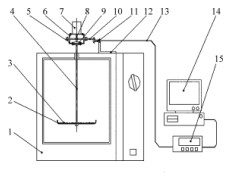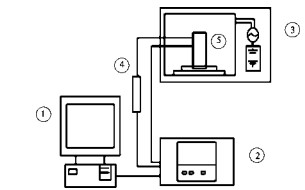
- Shandong Microwave Machinery Co.,Ltd.
- To be the Leader of microwave drying and edible oil refining equipments Manufacturer
Home> Company News> Effects of five drying methods on the quality of motherwort
- AddressNo. 225, Huangqiao Village, Beiyuan, Tianqiao District, Jinan, Shandong, China
- Factory AddressNo. 225, Huangqiao Village, Beiyuan, Tianqiao District, Jinan, Shandong, China
- Phone(Working Time)+86 0531 85064681
- Phone(Nonworking Time)0086-15020017267
- Fax+ 86 0531 85064682
Effects of five drying methods on the quality of motherwort
2018-11-22 09:55:14
Abstract: Objective To investigate five kinds of microwave drying equipment for Leonurus Leonurus japonicus Houtt. The impact of quality. Methods The contents of alkaloids (salbutine, motherwort) and flavonoids (rutin, quercetin, apigenin, saponin) were used as evaluation indexes for drying, dryness, hot air drying, infrared drying and microwave drying. The quality of the later motherwort was evaluated and analyzed by the TOPSIS method.
Results After hot air drying, the components remained the best; after microwave drying, the components were most lost. The whole plant can retain more ingredients than the dry section. The higher the drying temperature, the less the components are lost.
Conclusion: The whole plant hot air drying at 70 °C is the most suitable drying method for motherwort.
Key words: Motherwort microwave drying; drying method; alkaloid; flavonoid; TOPSIS method

Motherwort is a fresh or dry aerial part of the Labiatae family, which is listed in the "Shen Nong's Herbal Classic" and is listed as the top grade. It has been recorded in the past dynasties. It is known as the "blood family holy medicine" and the "good medicine". The effect of promoting blood circulation, diuresis and swelling, clearing away heat and detoxifying. Alkaloids, flavonoids, diterpenoids and other ingredients are the main medicinal substances. For example, motherwort can significantly strengthen uterine contractility and fight acute myocardial ischemia injury; stachydrine can resist cardiomyocyte hypertrophy induced by Ang II.
Li Suyun et al found that the protective effect of alkaloids and flavonoids in motherwort on rat myocardium was stronger than that of drug alone, indicating that its anti-ischemic activity may be a synergistic effect of various active ingredients; The contraction of the uterus is stronger than that of the same batch, and the pharmacological activity of the fresh motherwort capsule is stronger than that of the same dose.
Motherwort is harvested, dried or cut in the summer when the stems and leaves are flourishing, the flowers are not opened or opened. The traditional drying method has a long cycle and is susceptible to weather. The dryness and quality of the dried herbs are difficult to control and regulate. At present, modern methods such as hot air drying, infrared drying, and microwave drying have been gradually used in the drying process of Chinese herbal medicines, and have the characteristics of short drying time, controllable parameters, and stable and reliable quality of medicinal materials.
In this experiment, the content of stachysine, motherwort, rutin, quercetin, apigenin and saponin was used as the evaluation index, and different drying methods (hot air drying, infrared drying, microwave drying) of motherwort were preferred. The comparison between traditional drying and dry drying provides a useful exploration for its drying processing technology.
The motherwort is a Labiatae plant, but the volatile oil content is very low, and the floor is measured to be only 0.083%; Sun Ling et al. using microwave-assisted extraction to optimize the extraction process, only increased by 0.03. %. At the same time, most of the evaluations of the pharmacological effects of Yimu Herbs are concentrated on alkaloids and flavonoids, and there are few reports on their volatile oils. Therefore, this experiment did not examine such components, and added flavonoids based on the Chinese Pharmacopoeia to more comprehensively evaluate the quality of Motherwort in different drying methods.
 High efficiency food beverage factory stone paper production line
High efficiency food beverage factory stone paper production line Factory price Fully automatic Machine PP/PS Plastic Sheet Production Line
Factory price Fully automatic Machine PP/PS Plastic Sheet Production Line used deformered bar rolling mill production line
used deformered bar rolling mill production line Manufacturing plant automatic factory puffed sticky rice cracker production line
Manufacturing plant automatic factory puffed sticky rice cracker production line Production Line Pp Ppr Plastic Pipe Making Machine 20-63mm Multi-layer Extrusion Production Line For Water Supply
Production Line Pp Ppr Plastic Pipe Making Machine 20-63mm Multi-layer Extrusion Production Line For Water Supply